
واشنطن –
ليس الهدف من هذه المقالة استعراضًا عابرًا لمقتطفات سبق أن نشرتها على منصات التواصل الاجتماعي ، أو تلك التي تطرقت إليها في أحاديثي مع الأصدقاء والمعنيين. أو مجرد إعادة تدوير لما يُقال هنا وهناك.
هذه محاولة لكشف الواقع المرير الذي يعيشه المشهد السوري بعد سقوط النظام البائد، حيث يواصل الجميع بيع الشعارات والوعود، تمامًا كما كانت تُباع الأوهام سابقًا للشعب السوري باسم الثورة والتغيير.
الجار الاسرائيلي ، الذي يملك مفاتيح الشرعية في المنطقة، لن يمنح صك البراءة للنظام الجديد في دمشق. فهي ترى فيه كيانًا هشًا، لا يستحق الاعتراف أو الشراكة، لأنه لا يمثل حكومة منتخبة أو قابلة للحياة على المدى الطويل.
أما الولايات المتحدة، فهي تمضي في لعبتها الكبرى ضد إيران، مستخدمة سوريا كأداة ضغط إضافية في معادلة أكبر تشمل الملفات النووية، الإرهاب، وحتى النفوذ الروسي والصيني.
هذه القراءة ليست ترفًا فكريًا أو محاولة لملء الفراغ بالنقاش، بل هي محاولة جادة لفهم ما يدور خلف الكواليس.
سوريا اليوم ليست سوى جزء من لوحة إقليمية معقدة، أُعيد رسمها بمزيج من العنف والتواطؤ الدولي، وما زال المستقبل يلوح بأفق مليء بالمفاجآت، بعضها قد يأتي – إذا صحت توقعاتي – بحلاقة لحية خامنئي، او تشذيبها .. مع لحى أخرى سبقته ، أو ما هو أكثر من ذلك بكثير. …!!
سوريا بين مطرقة التحرير وسندان القوى الخارجية
في هذه المقدمة، أستعرض واقع سوريا المعقد بعد تحريرها من قبضة النظام البائد. ورغم هذا التحرير، لم يصبح القرار السوري بيد أبنائه، بل وجدت البلاد نفسها عالقة بين مطرقة التحرير وسندان القوى الإقليمية والدولية التي تضاعف من معاناة الشعب السوري المنهك.
مع انهيار النظام البائد ، ظهر مشهد سياسي متشابك حيث تتصارع مصالح القوى الخارجية، مما يضيف أبعادًا جديدة من عدم الاستقرار.
تحاول الحكومة الجديدة في دمشق بشكل محموم تعزيز شرعيتها وترسيخ سلطتها، لكن هذه الجهود غالبًا ما تأتي بنتائج عكسية تُضعف استقرارها وتخيب آمال أولئك الذين ظنوا أن هذا العهد سيكون خلاصًا حقيقيًا.
وفي هذا السياق، تتصاعد أهمية إسرائيل كلاعب مؤثر في تشكيل مصير النظام الجديد، بينما تستمر الضغوط الأمريكية المتزايدة على إيران. بذلك تصبح الأزمة السورية جزءًا صغيرًا من لوحة إقليمية أوسع تحمل في طياتها الكثير من الاحتمالات غير المتوقعة.
سوريا تحاول النهوض والسيف على رقبتها
ناتاشا هول، نيويورك تايمز، 3 أبريل/نيسان 2025
إسرائيل: الحاكم الفعلي لشرعية دمشق
في خضم التحولات السياسية العاصفة التي تمر بها سوريا، تبرز إسرائيل كلاعب محوري في تقرير مصير شرعية النظام الجديد في دمشق.
من وجهة نظر تل أبيب، النظام الجديد يفتقر إلى الشرعية المطلوبة للبقاء على المدى الطويل، لعدم انتخابه ديمقراطيًا، ولغياب الثقة في قدرته على تحقيق الاستقرار الدائم. يتضح هذا الموقف بشكل جليّ في تصريحات لمسؤولين إسرائيليين أشاروا خلالها إلى خطط للسيطرة العسكرية والاستخباراتية على منطقة تمتد إلى عمق 60 كيلومترًا داخل الأراضي السورية، وذلك لمنع أي تهديدات محتملة، وفق ما نشرته صحيفة يديعوت أحرونوت بتاريخ 10 يناير 2025. إسرائيل، التي نفذت مئات الغارات على الأراضي السورية منذ سقوط النظام البائد، تنظر بريبة إلى النظام الجديد بقيادة أحمد الشرع (المعروف سابقًا بأبو محمد الجولاني). وعلى الرغم من لهجته المعتدلة الحالية، ترى إسرائيل في هذا النظام تهديدًا طويل الأمد.
تعكس هذه النظرة استراتيجية إسرائيلية تتجنب إبرام أي اتفاقية سلام مع دمشق، إذ تعتبر أن أي استقرار مؤقت قد يتحول إلى عداء في المستقبل.
ووفقًا لتحديث إعلامي حديث نشرته الجزيرة نت بتاريخ 6 أبريل/ نيسان 2025، نقلت “وول ستريت جورنال” -عن مسؤول عسكري إسرائيلي- قوله إن الجيش ينفذ عمليات لضمان الأمن بالمنطقة العازلة في سوريا.

الضغوط الأمريكية على إيران: المشروع النووي كورقة تفاوض
في سياق متوازٍ مع التحولات الإقليمية، تتصاعد الحملة العسكرية والدبلوماسية الأمريكية ضد نظام الملالي في إيران بهدف الضغط على طهران لتفكيك مشروعها النووي العسكري.
وبينما يظهر التصعيد العسكري على السطح، تُجرى خلف الكواليس مفاوضات شاقة تهدف إلى صياغة معاهدة جديدة مع واشنطن، تتضمن شروطًا صارمة قد تؤدي إلى إنهاء الطموحات النووية الإيرانية بالكامل.
هذا المسار يبدو الأكثر احتمالًا مقارنة باللجوء إلى ضربات عسكرية استراتيجية على المنشآت النووية، والتي قد تُسفر عن كارثة بيئية ذات تداعيات تمتد إقليميًا وعالميًا.
تؤكد تحديثات إعلامية حديثة هذا النهج. فقد أفادت وكالة رويترز بتاريخ 25 مارس/ آذار 2025 أن مسؤولًا أمريكيًا رفيع المستوى التقى وزير الخارجية السوري “أسعد الشيباني ” لمناقشة تخفيف العقوبات، مشيرًا إلى أن واشنطن تهدف إلى ضمان مغادرة المقاتلين الأجانب ومنع إعادة النفوذ الإيراني في سوريا.
كما أوضحت نيويورك تايمز في 3 أبريل/نيسان 2025 أن الإدارة الأمريكية تعتبر استقرار سوريا الجديدة أداة فعالة لتقويض النفوذ الإيراني، مع التحذير من أن أي تصعيد قد يعيد إيران إلى الساحة السورية بقوة.
في غضون ذلك، يفعل الإيرانيون ما يحلو لهم
مارك دوبويتز، إسرائيل هيوم
واشنطن ودمشق: بيع الأوهام أم سياسة واقعية؟
من جانب آخر، تروج بعض الأطراف في واشنطن، بدعم من حلفاء إقليميين كقطر وتركيا، لرواية مفادها أن العقوبات الأمريكية والدولية المفروضة على سوريا قد تُخفف أو تُرفع، بل وأن الرئيس الأمريكي قد يلتقي أحمد الشرع.
هذه الرواية تعيد إلى الأذهان أوهام المرتزقة السياسيين في الائتلاف السوري المعارض السابق، الذين باعوا الشعب السوري وعودًا كاذبة خلال سنوات الحرب على الشعب السوري.
لكن الواقع يشير إلى أن الجهود الدبلوماسية السابقة والمستمرة لم تُثمر عن أي تحول ملموس في الأوضاع السورية، نتيجة تداخل المصالح المتضاربة. في هذا السياق، أكدت وزارة الخارجية الأمريكية في تصريحات لتلفزيون سوريا بتاريخ 1 أبريل/ نيسان 2025، أنها تدعم سيطرة السلطات الجديدة على كامل الأراضي السورية، مع مراجعة العقوبات المفروضة على النظام البائد، واستبعاد النفوذ الإيراني والمقاتلين الأجانب.
ومع ذلك، تبقى هذه التصريحات مجرد خطاب سياسي يفتقر إلى ضمانات عملية، خاصة في ظل هيمنة إسرائيل على القرار السوري.
سوريا تحت المجهر ومستقبل مفتوح
تظل سوريا جزءًا من لوحة إقليمية معقدة تتشابك فيها مصالح إسرائيل، الولايات المتحدة، وإيران. إسرائيل ترفض الاعتراف بالنظام الجديد كشريك موثوق، بينما تسعى واشنطن لاستخدام استقرار سوريا كورقة ضد إيران. داخليًا، يعتمد نجاح النظام على قدرته على توحيد الفصائل وإعادة بناء الاقتصاد، وهي مهام تبدو بعيدة المنال حاليًا.
من بين السيناريوهات المحتملة:
- تسوية نووية مع إيران: قد تؤدي إلى انسحاب تدريجي لنفوذها من سوريا، مما يعزز استقرار النظام الجديد بشرط دعم دولي.
- تصعيد إسرائيلي: استمرار الغارات والسيطرة على المناطق العازلة قد يُبقي سوريا في حالة ضعف دائم.
- انهيار داخلي: فشل النظام في تحقيق الاستقرار الاقتصادي والسياسي قد يُعيد الفوضى إلى البلاد.
مستقبل سوريا يبقى مفتوحًا، لكن نجاح أي مسار يتطلب توازنًا دقيقًا بين الضغوط الخارجية والإصلاحات الداخلية.
وسط هذه الديناميات المضطربة، يبقى مستقبل سوريا مفتوحًا على جميع الاحتمالات، بما في ذلك مفاجآت قد تغيّر موازين القوى الإقليمية. من بين تلك الاحتمالات، تفكيك المشروع النووي الإيراني بشكل رمزي يعكس “حلاقة لحية خامنئي”، أو التحول نحو تسويات سياسية غير متوقعة تُعيد صياغة المشهد الإقليمي.
New Syria
Threads of the Regional Game Intertwine Behind the Scenes
By: SAAD FANSA
– Washington
This article is not a fleeting attempt to showcase excerpts previously shared on social media platforms or discussed in conversations with friends and stakeholders. Nor is it merely a recycling of what has already been said here and there.
It is an effort to uncover the grim reality of the Syrian scene after the fall of the bygone regime, where slogans and promises continue to be sold, just as illusions were once peddled to the Syrian people under the guise of revolution and change.
The Israeli neighbor, holding the keys to legitimacy in the region, will not grant the seal of approval to the new regime in Damascus. Israel views it as a fragile entity, unworthy of recognition or partnership, as it does not represent an elected government or one capable of long-term viability. Meanwhile, the United States continues its grand game against Iran, using Syria as an additional pressure tool in a larger equation that encompasses nuclear files, terrorism, and even Russian and Chinese influence.
This analysis is not intellectual luxury or an attempt to fill the void with discussion; it is a serious endeavor to understand what is happening behind the scenes. Syria today is merely a fragment of a complex regional mosaic, redrawn with a mix of violence and international complicity. The future remains on a horizon filled with surprises—some of which, if my predictions are correct, may involve shaving Khamenei’s beard, trimming it, or something far beyond that.
Syria Between the Hammer of Liberation and the Anvil of External Powers
In this introduction, I explore Syria’s complex reality after its liberation from the grip of the bygone regime. Despite this liberation, the Syrian decision-making remains out of its people’s hands, as the nation finds itself caught between the hammer of liberation and the anvil of regional and international powers, which intensify the suffering of its exhausted population.
Following the fall of the bygone regime, a tangled political landscape emerged where external interests collide, contributing to additional layers of instability. The new government in Damascus has feverishly tried to bolster its legitimacy and consolidate its authority, but these efforts often backfire, undermining its stability and dashing the hopes of those who regarded this period as a genuine salvation.
In this context, Israel’s pivotal influence in determining the fate of the new regime comes to the forefront, while U.S. pressures on Iran continue to escalate. Consequently, the Syrian crisis becomes merely a detail in a broader regional tableau filled with unexpected possibilities.
Natasha Hall, New York Times, April 3, 2025
Israel: The De Facto Arbiter of Damascus’ Legitimacy
Amid the turbulent political transformations in Syria, Israel emerges as a critical player in determining the legitimacy of the new regime in Damascus.
From Tel Aviv’s perspective, the new government lacks the necessary legitimacy for long-term survival, due to its undemocratic election and the absence of trust in its ability to ensure lasting stability. This stance is clearly reflected in statements by Israeli officials referencing plans for military and intelligence control over a 60-kilometer zone inside Syrian territory, aimed at preventing potential threats, as reported by Yedioth Ahronoth on January 10, 2025.
Having carried out hundreds of airstrikes on Syrian soil since the fall of the bygone regime, Israel views the new government, led by Ahmad al-Sharaa (formerly Abu Muhammad al-Jolani), with suspicion. Despite its moderate rhetoric, Israel considers this regime a potential long-term threat. This outlook aligns with an Israeli strategy to avoid any peace agreements with Damascus, believing that temporary stability could turn into future hostility. According to a recent media update published by Al Jazeera Net on April 6, 2025, the Wall Street Journal quoted an Israeli military official as saying that the army is carrying out operations to ensure security in the buffer zone in Syria.
U.S. Pressures on Iran: The Nuclear Project as a Bargaining Chip
In parallel with regional shifts, the U.S. is intensifying its military and diplomatic campaign against Iran’s regime to force Tehran into dismantling its military nuclear project.
While military escalation dominates the surface, arduous negotiations are underway behind the scenes to craft a treaty with Washington that imposes stringent conditions, potentially ending Iran’s nuclear ambitions entirely. This route appears more likely than strategic strikes on nuclear facilities, which could lead to an environmental catastrophe with widespread repercussions.
Recent media updates affirm this approach. Reuters reported on March 25, 2025, that a senior U.S. official met with Syrian Foreign Minister As’ad al-Shibani to discuss easing sanctions, emphasizing Washington’s intent to ensure the departure of foreign fighters and prevent Iran’s resurgence in Syria. Meanwhile, The New York Times on April 3, 2025, highlighted the U.S. administration’s view that stabilizing the new Syria is instrumental in undermining Iranian influence, though any escalation risks reintroducing Iran forcefully into the Syrian scene.
Mark Dubowitz, Israel Hayom
Washington and Damascus: Selling Illusions or Pragmatic Policy
Some factions in Washington, supported by regional allies such as Qatar and Turkey, promote narratives suggesting that international sanctions on Syria might be eased or lifted, and even that the U.S. President might meet Ahmad al-Sharaa.
These narratives evoke memories of the false promises of political mercenaries in the former Syrian opposition coalition, who sold the Syrian people empty dreams throughout years of conflict. However, the reality shows that past and ongoing diplomatic efforts have failed to yield tangible changes in Syria, due to overlapping and conflicting interests.
The U.S. State Department stated on April 1, 2025, in remarks to Syria TV, that it supports the new authorities’ control over all Syrian territories while reviewing sanctions on the bygone regime and excluding Iranian influence and foreign fighters. Nonetheless, these statements remain mere political rhetoric lacking practical guarantees, especially under Israel’s dominance in Syrian decision-making.
Conclusion: Syria Under the Spotlight and an Open Future
Syria remains a part of a complex regional mosaic, where the interests of Israel, the United States, and Iran intertwine. Israel continues to reject the new regime as a reliable partner, while Washington aims to leverage Syria’s stability as a bargaining chip against Iran. Domestically, the success of the regime hinges on its ability to unify factions and rebuild the economy—tasks that currently seem far out of reach.
Among the possible scenarios:
Syria’s future remains open-ended, but the success of any path forward demands a delicate balance between external pressures and internal reforms. Amid these turbulent dynamics, Syria’s fate hangs on all possibilities, including surprises that could shift regional power balances. Among those possibilities are the symbolic dismantling of Iran’s nuclear ambitions—likened to “shaving Khamenei’s beard”—or a move toward unexpected political settlements that redefine the regional landscape.

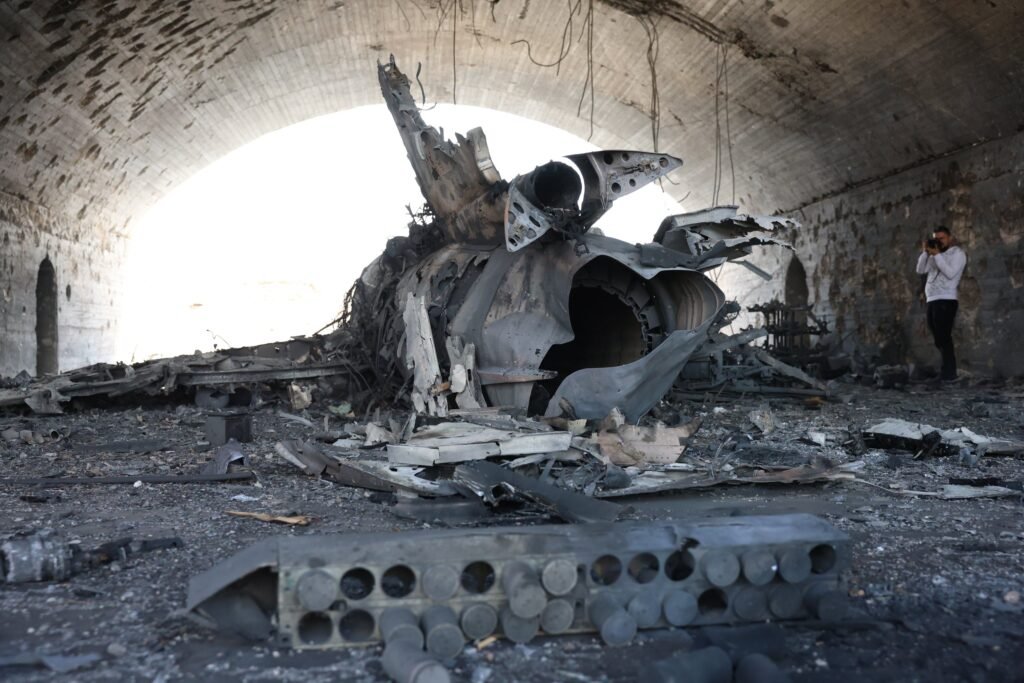
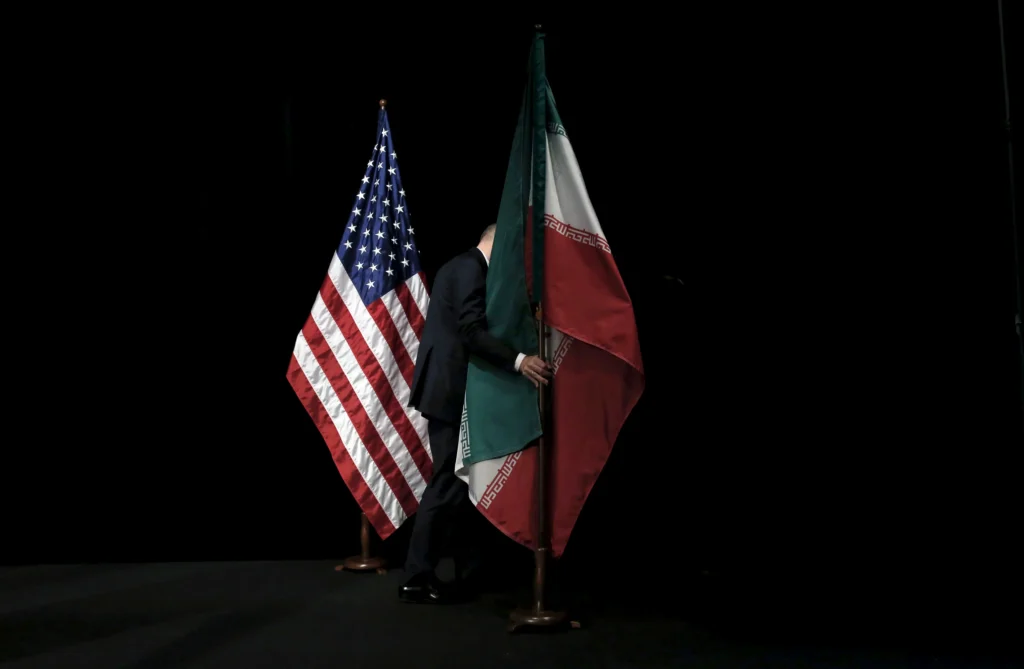
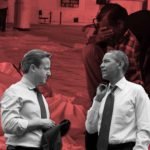

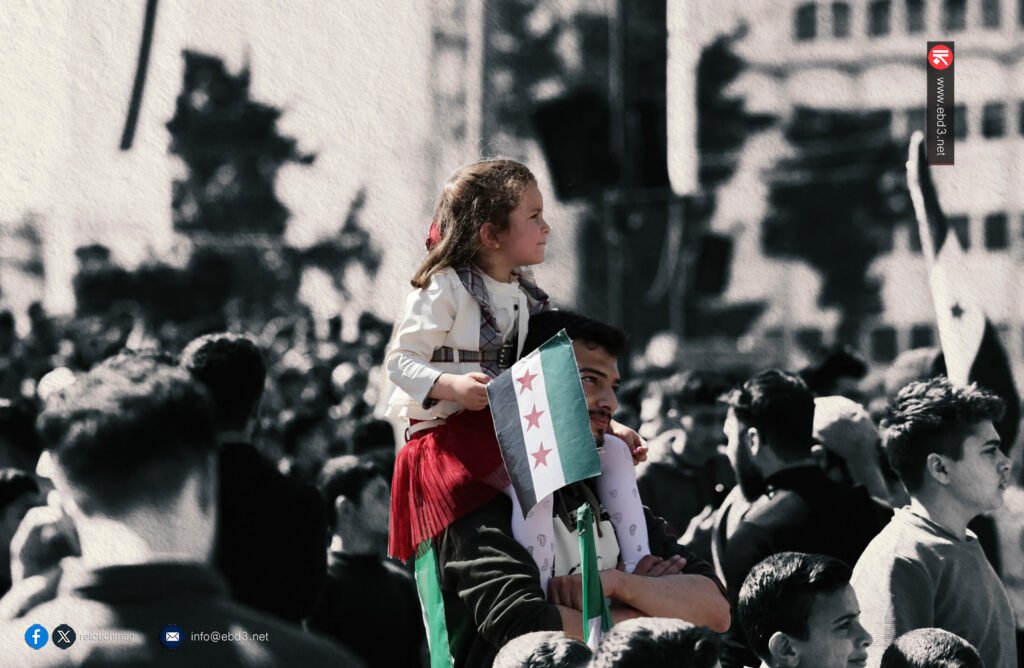
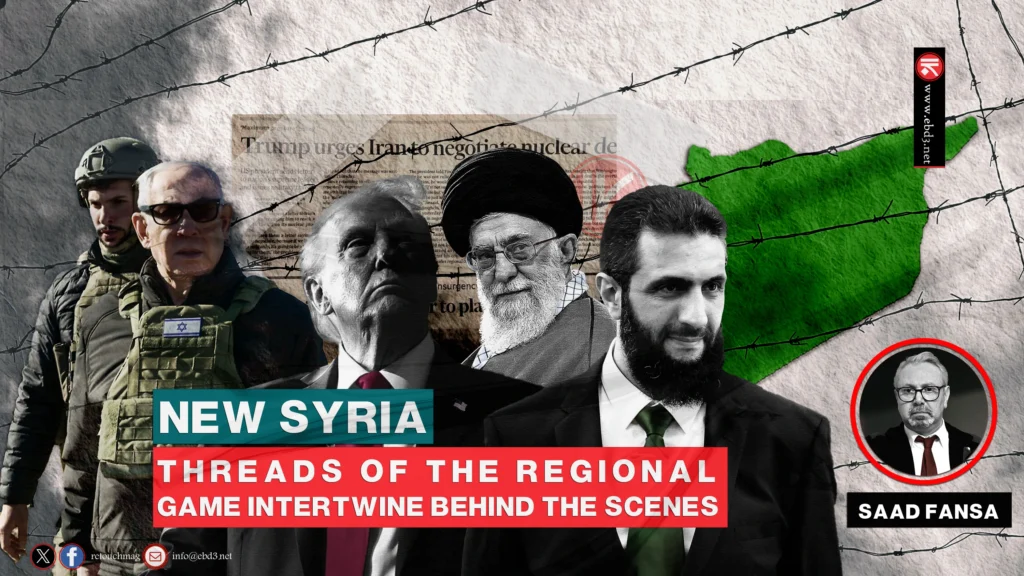


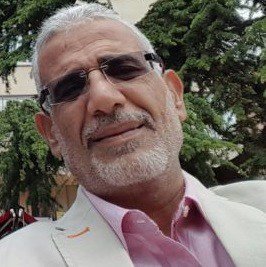 ماهر حمصي
ماهر حمصي